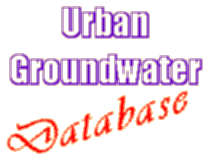 |
 |
Town/City: |
Visakhapatnam |
State/Province: |
Andhra Pradesh |
Country: |
India |
Latitude/Longitude: |
17 40' N 83 10' E |
Information supplied byV,V.S. Gurnadha Raopostmaster@ngri.uunet.in91 40 67 15 64 Dated Fri Feb 2 10:51:07 1996 |
|
 |
 |
Town/City: |
Visakhapatnam |
State/Province: |
Andhra Pradesh |
Country: |
India |
Latitude/Longitude: |
17 40' N 83 10' E |
Information supplied byV,V.S. Gurnadha Raopostmaster@ngri.uunet.in91 40 67 15 64 Dated Fri Feb 2 10:51:07 1996 |
|
Character: The area appears like a basin, as it is bounded by Kailasa, Yarada and Narva hill ranges on north, south and west, respectively and east by Bay of Bengal. It has an undulating topography with a height of 4 to 50 m above MSL (excluding hills). Fast developing industrial city in Andhra Pradesh. Growth rate : 5.42% per annum Culture : Traditional Industry: Industrialized urban area with a natural harbour; oil, chemicals and steel industries Land use: Urban (68%), Industry (13%), Wet land (13%) and Agriculture (6%)
Type of climate: Sub-humid to semi-arid. Seasons : Winter, Summer and Monsoon Annual rainfalll : 940 mm Evaporation : 1800 - 2000 mm
Rock type: Khondalite suite of rocks (Garnetiferrous sillimanite gneiss, quartzo - feldsphatic garnet gneiss) of Eastern Ghats mobile belt, belonging to the Archaeans and surficial deposite (red sediments, laterites, pediment fans, colluvium, alluvium and coastal sand) of the Quaternaries.
Aquifer type: Unconfined as well as semi-confined to confined nature Recharge: 145 mm per annum Discharge: 13 to 210 lpm (litres per minute), averaging 72 lpm.
Groundwater quality: Good to bad
11.3 MGD water, used for domestic consumption against 40 MGD (Govt. of India standadrds), while 12.6 MGD water, used for industrial purpose. By 2016 A.D the domestic requirement would be about 120 MGD, based on population of 3 milllion.
Effluent from Hindustan Polymers, Leakage effluent from Hindustan Zinc Limited, and other small scale industries; and urban wastes (septic tanks, sweage wastes, solid wastes)
1. Land mass movement, soil erosion and industries activities should be controlled on the rolling plain (2 - 3 ).
2. Coastal plain (1 - 3 ) is being affected by coastal erosion and hence is suitable for recreational/tourist centres with adequate land management, such as constructing groins and planting sand binding.
3. Marsh land has clay deposit, which can be used for manufacturing of bricks with a suitable combination of lime-gypsum-flyash.
4. Indescriminate quarrying of debris and rocks should be avoided, and mass movement, gullying and soil erosion should be controlled for stability of the foundations on the hilll slopes. If the quarrying is inevitable, hill slopes should be revegetated soon after quarrying.
5. The flat crestal parts of the hillls are recommended for the development of recreational/tourist centres with necessary management of overland flow of water. Residential hills are recommended for quarrying.
6. For Groundwater development in the area, optimum depth and diamenter of the bore well are recommended to be 25-45 m and 10 cm, respectively to reduce capitalisation on them without any significant decrease in the yielding capacity of the wells.
7. By 2016 A.D., the water consumption (domestic + industry) would be 320 MGD. The capacity of the existing source is around 25 MGD, creating a shortfall for about 300 MGD. There is no source in the area which can supply 300 MGD except Godavari river. This could be possible when Polavaram project is executed.
no providedBack to Topics
1. Dr. N. Subba Rao Fax : 91-891-544765 & 555547 Lecturer Department of Geology Telex : 0495-628 & 0495-540 RUIN Andhra University Visakhapatnam - 530 003 Phone : Off. 554871 Extn. 232 Andhra Pradesh India
2. Dr. G. Krishna Rao Fax : 91-891-544765 & 555547 Professor of Geology Andhra University Telex : 0495-628 & 0495-540 RUIN Visakhapatnam - 530 003